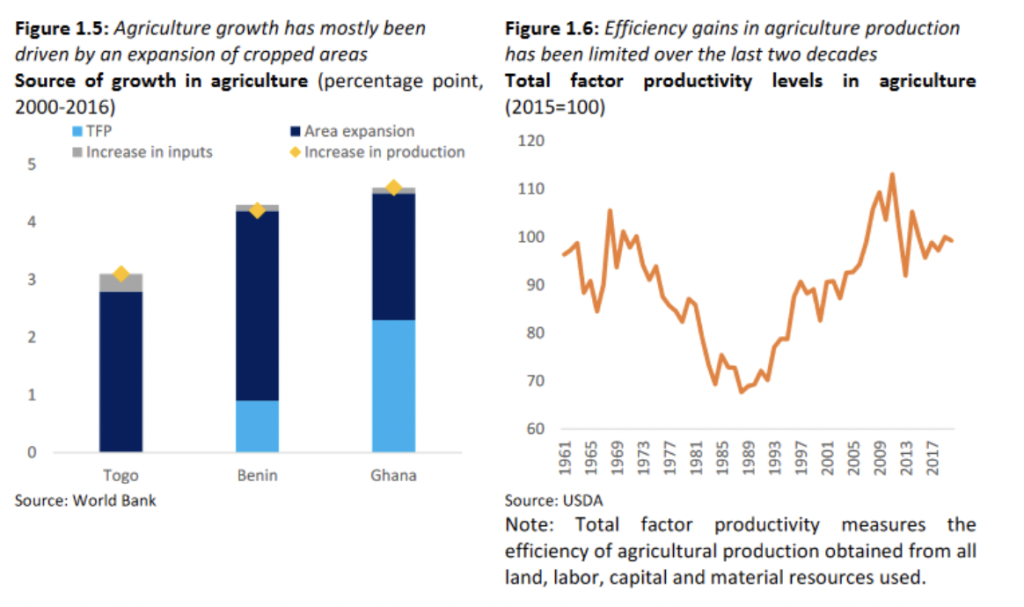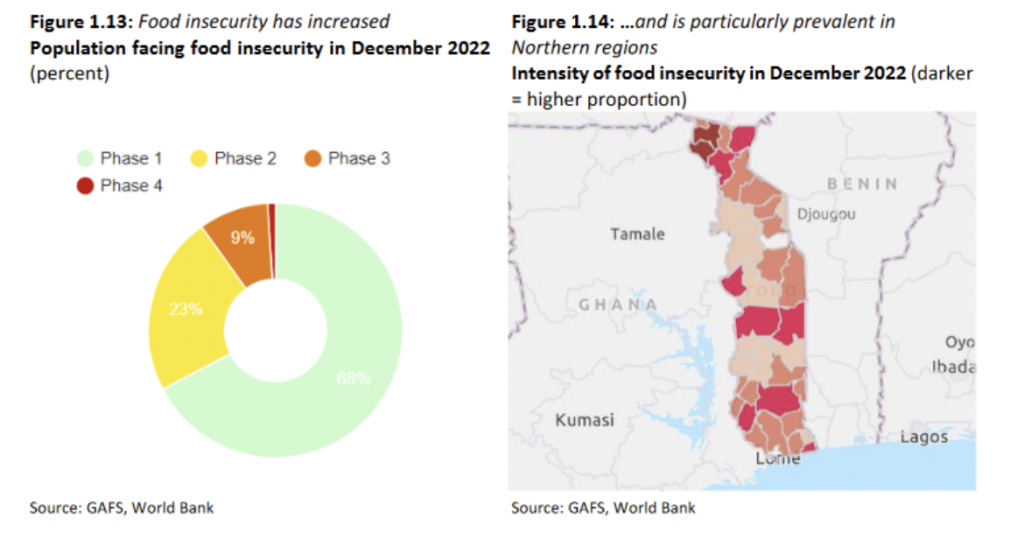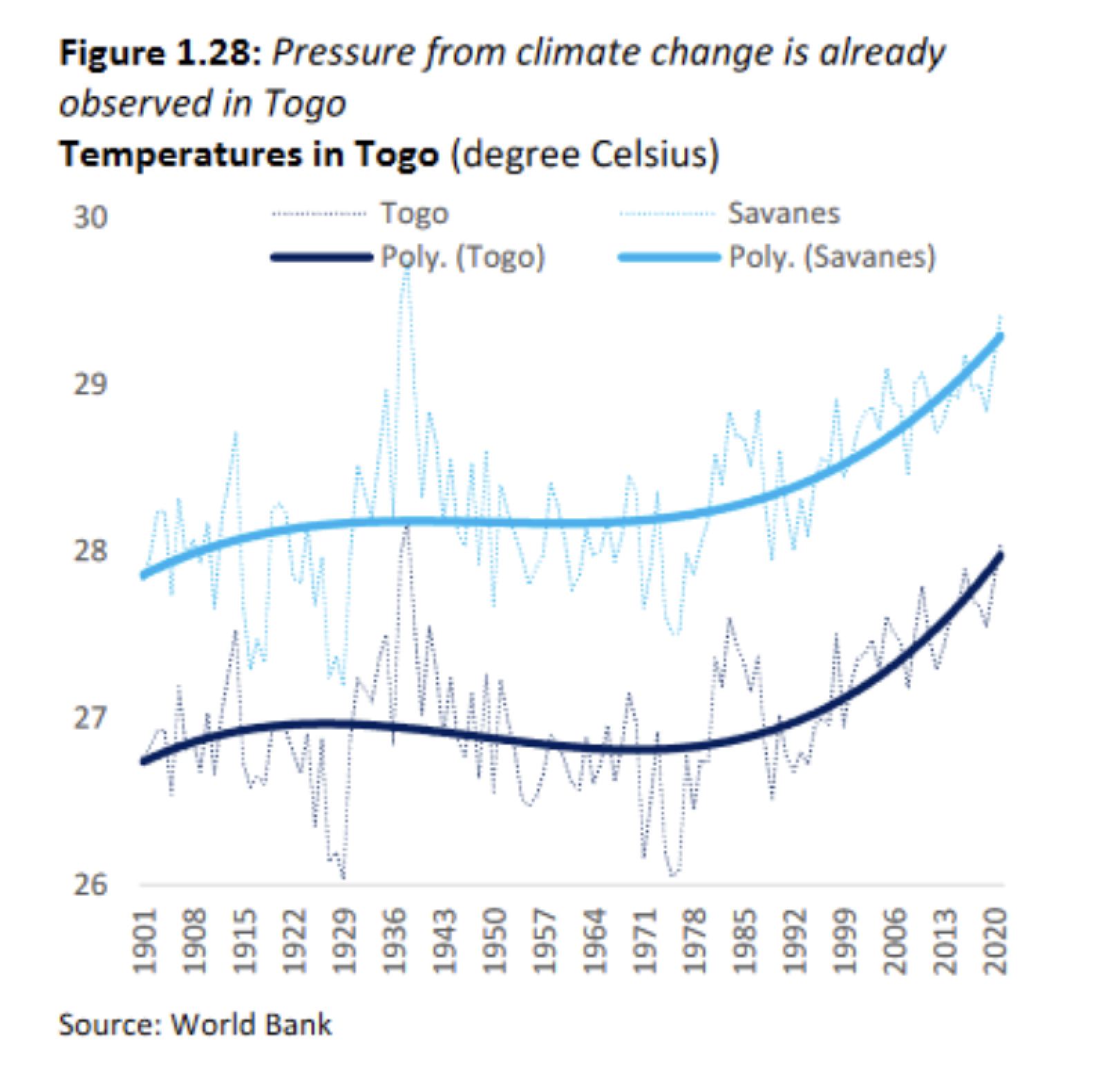Highlights:
-
Since the onset of COVID-19 in 2020, Togo’s economy has shown signs of resilience in the face of shocks but efforts to reduce poverty were frustrated and fiscal space depleted.
-
The agricultural sector remained constrained by long-standing structural challenges.
-
It faces multiple constraints that limit productive investment and commercialization, leading to insufficient opportunities to raise living standards in rural areas.
-
Adoption of yield-enhancing technologies is limited, with only 37 percent and 8 percent of agricultural households, respectively, using fertilizer and improved seeds and barely 1 percent using irrigation.
-
Overall, the share of commercialized agricultural output is only 20 percent. In this context, the expansion of agriculture production since the mid-2000s (3.6 percent per year on average) was mainly extensive rather than intensive (driven by increases in cropped area rather than efficiency gains), which contributed to deforestation and soil degradation (Figure 1.5).
-
Total factor productivity in the agriculture sector has been declining over the last decade and is barely higher than in the early 1960s (Figure 1.6).

-
With the agriculture sector dominated by traditional rainfed farming practices, variable rainfalls observed in recent years have also had an adverse impact on more exposed rural populations.
-
Agriculture production improved in 2022 despite disruptions in the price and availability of inputs. Government support was significant during 2022, including through the distribution of inputs at subsidized prices and scaled up presence of security forces in Northern regions to facilitate farmers’ access to land. Despite signs of resilience in crop production, the number of people facing acute food insecurity (CH Phase 3 and above) increased significantly in 2022 due to rising food prices (Figure 1.13 & 1.14).

-
High food price inflation has disproportionately affected poor households, who spend a larger share of their budget on food.

-
Weather related hazards are likely to increase over time. Future droughts will likely impact crop production and water availability. Togo’s reliance on rain-fed agricultural and livestock contributes to a high degree of vulnerability to such shocks. Floods could also impact food security and infrastructure, and encourage communicable and water borne diseases, such as cholera and malaria, while sea level rise will threaten coastal settlements, for instance through salinization of fresh water sources at the coast and may also force migrations.

-
A scenario where Togo is able to combine far-reaching reforms with smart fiscal consolidation could yields substantial opportunities for faster growth and poverty reduction.
-
Reforms would be particularly important in the agriculture sector with a view to boosting productivity, speeding up structural transformation, and reducing poverty and fragility risks, which concentrate in rural and agriculture-dependent communities. This would require more effective and sustainable land management, better access to resilient seeds, fertilizers, irrigation, finance, and modern extension services, as well as the removal of trade barriers to improve access to inputs and untap the export potential of the agriculture and agribusiness sector.
-
Trade openness and foreign direct investment are key enablers for small open economies like Togo, but both have been on a downward trend over the last decade.
-
The implementation of the African Continent Free Trade Agreement (AfCFTA) could be an important catalyst for change.

| Year of publication | |
| Geographic coverage | Togo |
| Originally published | 27 Oct 2023 |
| Related organisation(s) | World Bank |
| Knowledge service | Metadata | Global Food and Nutrition Security | Food security and food crisesClimate extremes and food security | Food and nutrition securityAccess to foodFood price crisis |
| Digital Europa Thesaurus (DET) | economic analysistrade policyCOVID-19regional integrationagricultural productionagricultural policyinflationresiliencepolicymakingfiscal policy |
